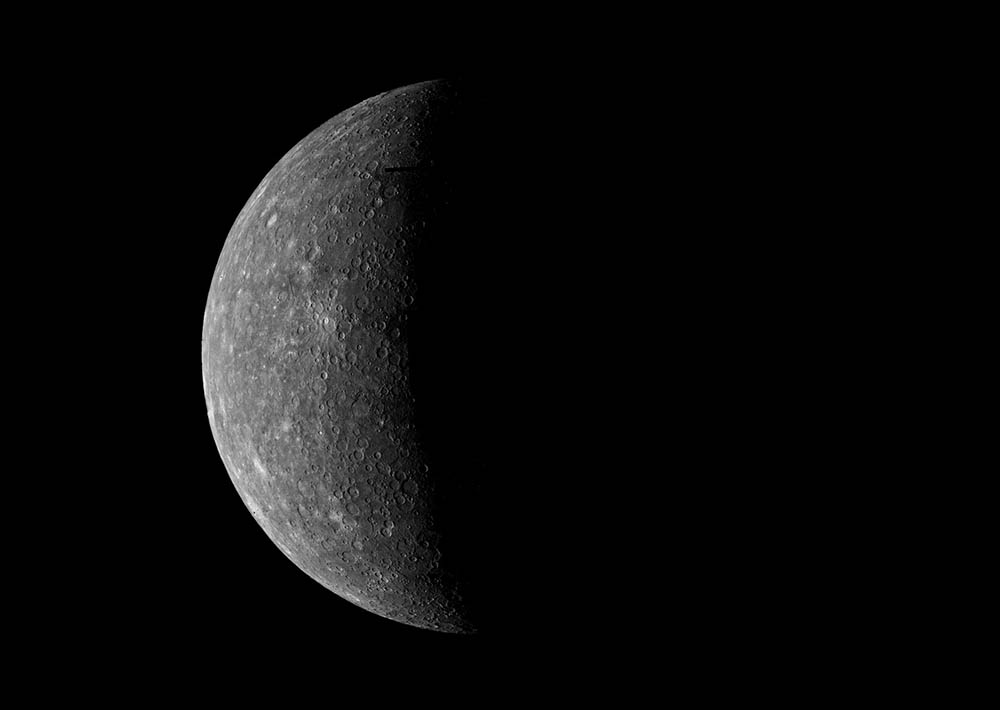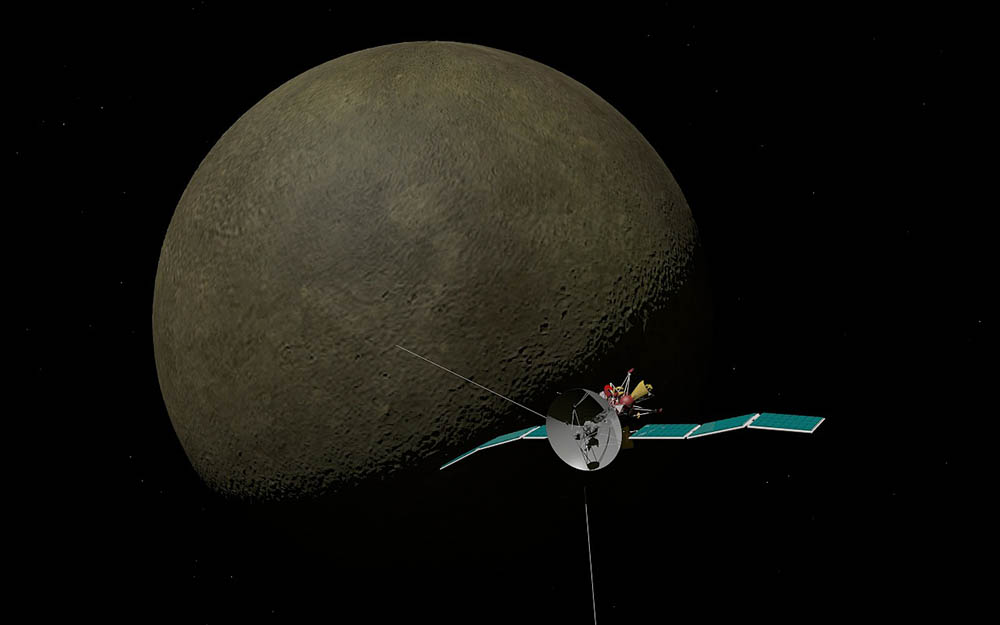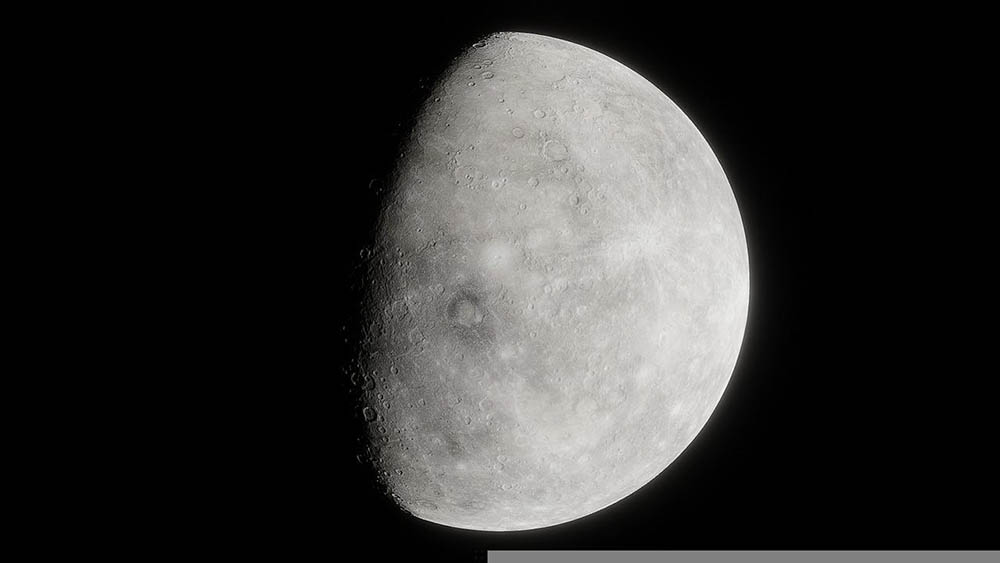20 Interesting Facts About Mercury You Never Knew
Last Updated on

Mercury is one of the most fascinating of the eight planets in our Solar System. It is one of four terrestrial planets with similar rocky characteristics to the Earth, Venus, and Mars. That fact has led many to wonder whether humans—or any life for that matter—could live on it. While we don’t know much about Mercury, there are still some interesting facts to learn about it.
The planet’s unique position in the galaxy accounts for some of the traits that make it stand apart from the other celestial bodies. What’s certain is that there’s more to discover.

The 20 Interesting Facts About Mercury You Never Knew
1. Mercury Is the Fastest Planet in Our Solar System
The Earth seems like a slowpoke compared to Mercury. While our orbit velocity is 66,622 miles per hour, Mercury’s pace is nearly double the Earth’s at 105,946 miles per hour. This speed also affects the length of its year, with only 88 days per year compared to our 365 days per year. That equates to over four Mercurian years to our one.

2. Mercury Is the Smallest Planet in Our Solar System
Mercury is the smallest planet in the galaxy, while Jupiter is the largest. Comparing the two yields some mind-boggling numbers. The latter is over 23,500 times larger than the former when measured in the volume of cubic miles. To put it in context, Jupiter is 1,311 times larger by volume than the Earth.
3. Mercury Is a Planet of Extremes
Mercury’s close position to the Sun explains some of the anomalies you’ll find with this planet. It has no atmosphere, so there is no protective layer retaining heat. That sets the stage for its wild temperature extremes ranging from an average daily temp of 800℉ to a nighttime low of -300℉. Bear in mind that Mercury is about 35,980,000 miles from the Sun. The Earth is over 2.5 times as far or 92,960,000 miles.
4. This Planet Has Inspired Many Famous Authors
Mercury has provided inspiration for many authors regarding this mysterious planet with all its extremes. Famous pieces include H. P. Lovecraft’s Cthulhu Mythos, Ray Bradbury’s Frost and Fire, and Isaac Asimov’s Lucky Starr and the Big Sun of Mercury. Lovecraft even has the distinction of a crater on the planet bearing his name by the International Astronomical Union (IAU).
5. Scientists Have Mapped Mercury
Subtracting the two planets’ distance from the Sun, we get a relative space between the Earth and Mercury at approximately 56,980,000 miles. Compare this figure to the 238,855 miles from the Moon. Scientists have mapped and named 541 physical features on Mercury despite this vast distance.
We already mentioned the Lovecraft Crater. There are other craters with equally imaginative names, such as Bach, Barney, Joplin, and Rembrandt. Mercury appears to be a shrine to many famous authors and composers, with even Tolkien and Picasso among its ranks.

6. Mercury Is Almost All Core Material
Mercury has a unique egg-shaped orbit and a curious spin. Scientists have theorized that part of the reason for this celestial anomaly is its physical structure. It has a metallic core, but it also consists of a significant portion of liquid or molten material. Researchers estimate that less than 20% of its 1,289-mile radius forms its mantle and crust.
7. The Ancient Greeks Had Different Names for Mercury
It’s not unusual for different cultures to have had various names for what they saw in the sky. That is part of the reason that the IAU standardized them today. Mercury is unique in that you can observe it in both the morning and evening skies. That also explains why the ancient Greeks had two names for this planet: Apollo and Hermes.
8. The Mercury Man Logo of the Florists’ Telegraph Delivery Has Been Around Since 1914
The name “Mercury” comes from the Roman god Mercurius, the messenger of the gods. That fact, combined with the planet’s speed, made it the natural choice for the then Florists’ Telegraph Delivery (FTD) to adopt the so-called Mercury Man as its logo in 1914.
9. It May Be Close to the Sun, But Mercury Isn’t the Hottest Planet
With Mercury being so close to the Sun, you’d think that it’d be the hottest planet. Remember how the average daytime temperature reaches 800℉? It gets even hotter. The title actually belongs to the second nearest planet to the Sun—Venus. Its temperatures can reach a blistering 900℉. Its gaseous atmosphere acts like a giant blanket, retaining the heat even though it’s nearly twice as far from the Sun at 67,230,000 miles away.

10. Water Exists on Mercury
One of the pressing questions that scientists try to answer when exploring any planet or moon is whether it can support life. As we’ve seen, Mercury has a couple of strikes against it with its extreme temperatures and lack of an atmosphere. However, evidence suggests that water, or at least ice, may exist on some parts of the planet. That brings us to our next Mercurian fact.
11. Mercury Has a Dark Side
Like the Moon, Mercury has some areas that exist in darkness that are referred to as the permanent shadows of the planet. We see them as the structures on its surface. Those regions may contain the ice that scientists theorize exists on it. These places protect the ice stores from the searing sunlight that would normally evaporate the water.
12. Only Two NASA Spacecraft Have Traveled Close to Mercury
The formidable distance and unique orbit present challenges to exploring Mercury. Nevertheless, two NASA space probes have managed to collect some data about the planet. Mariner 10 was the first one, bringing the first images with a technique called photomosaics. You can think of it as an astronomical photoshopping process.
MESSENGER was the next mission, with additional data collected until it went down in 2015. It delivered the first evidence of ice on the planet. A joint effort by the European Space Agency and Japan Aerospace Exploration Agency (JAXA) began in 2018 with its BepiColombo mission. Plans for an in-depth study of Mercury are scheduled for early 2026.
13. Mercury Isn’t Easy to Spot
Unlike other planets, you can only spot Mercury during twilight or dawn. Opportunities also exist when its orbit takes it across the Sun. Unfortunately, that only occurs 13 times in a century. Bear in mind that Mercury is the smallest planet and, consequently, isn’t as bright as the others.

14. Mercury Is Closer to Earth Than Venus Is
Undoubtedly, you learned in school that Venus was the second-closest planet to the Sun, followed by Earth. Logically, it would seem that Venus was nearer to us than Mercury. However, that’s not necessarily true. The answer rests with the varying orbit of the planets. Recent calculations involving heavy-duty physics and math reveal that Mercury is our closest neighbor on average.
15. Mercury Was First Officially Documented by Galileo Galilei and Thomas Harriott in 1631
We know that the ancient peoples knew about Mercury’s existence, albeit as a random object in the sky. However, Galileo Galilei and Thomas Harriott changed our previous thinking about the planet with their discovery in 1631. While their telescope was nothing like the ones we have today, it was powerful enough for the scientists to distinguish what they saw.
16. The Earth Is Over Three Times Larger Than Mercury
We’ve discussed the volume differences between the Earth and Mercury. The physical size of our planet is nearly four times that of the smallest planet. That helps explain the varying characteristics of the two concerning our respective orbits, velocities, and days per year. It also tells us why Mercury is so hard to spot sometimes.
17. The Sun Appears Over Three Times Larger on Mercury Than the Earth
The size and distance differences come to light when we consider how things would appear on each of the planets. Indeed, there are times when the Sun looms large in the sky at dawn or dusk. Imagine what it would be like on Mercury. That ball of light would appear more than three times larger than what we see on Earth.

18. Mercury Resembles the Moon in Several Ways
We mentioned that Mercury is one of four terrestrial planets. It shares many traits with the Moon. Both have rocky, cratered surfaces with visible physical features. Neither have moons or rings around them. They each push the environmental extremes with livable conditions. Space missions have found evidence of water on both of them, too.
19. Ancient People Described Five Planets, With Mercury Being One of Them
The interesting thing about the closest planets is that people discovered them without a telescope or binoculars. That’s why you wouldn’t see a name or culture having been the first people to spot something in the sky. The planets Venus, Mars, Jupiter, Saturn, and Mercury are easy to see because they are so bright. They also don’t twinkle like a star does.
20. Wednesday Is Associated With Mercury
We associate some planets with the days of the week, such as Jupiter and Saturn. Mercury can also claim its own with Wednesday. We mentioned the Greek names for the planet. The Germanic Woden derives from Hermes, the Greek word for Mercury. Woden, in turn, translates into the day of Mercury or mid-week. Thus, the Roman god’s association with Wednesday or Woden’s day.

Conclusion
It’s interesting to think that people once looked up to the sky with the same awe we have today. Although knowledge about the stars and planets served different purposes then, we still strive to learn more about the other celestial bodies in our Solar System.
Featured Image Credit: NASA, Unsplash
Table of Contents
- The 20 Interesting Facts About Mercury You Never Knew
- 1. Mercury Is the Fastest Planet in Our Solar System
- 2. Mercury Is the Smallest Planet in Our Solar System
- 3. Mercury Is a Planet of Extremes
- 4. This Planet Has Inspired Many Famous Authors
- 5. Scientists Have Mapped Mercury
- 6. Mercury Is Almost All Core Material
- 7. The Ancient Greeks Had Different Names for Mercury
- 8. The Mercury Man Logo of the Florists’ Telegraph Delivery Has Been Around Since 1914
- 9. It May Be Close to the Sun, But Mercury Isn’t the Hottest Planet
- 10. Water Exists on Mercury
- 11. Mercury Has a Dark Side
- 12. Only Two NASA Spacecraft Have Traveled Close to Mercury
- 13. Mercury Isn’t Easy to Spot
- 14. Mercury Is Closer to Earth Than Venus Is
- 15. Mercury Was First Officially Documented by Galileo Galilei and Thomas Harriott in 1631
- 16. The Earth Is Over Three Times Larger Than Mercury
- 17. The Sun Appears Over Three Times Larger on Mercury Than the Earth
- 18. Mercury Resembles the Moon in Several Ways
- 19. Ancient People Described Five Planets, With Mercury Being One of Them
- 20. Wednesday Is Associated With Mercury
- Conclusion
About the Author Chris Dinesen Rogers
Chris has been writing since 2009 on a variety of topics. Her motto with all of her writing is “science-based writing nurtured by education and critical thinking.” Chris specializes in science topics and has a special love for health and environmental topics, and animals of all shapes and sizes.
Related Articles:
15 Crucial Facts About Ultraviolet Rays & the Sun
What Constellation Is Spica In? The Interesting Answer!
10 Interesting Leo Constellation Facts, Myths, and FAQs
15 Interesting Pegasus Constellation Facts, Myths, and FAQs
6 Interesting Sagittarius Constellation Facts, Myths, and FAQs in 2024!
What Are Constellations? Where Did They Come From?
8 Interesting Libra Constellation Facts, Myths, and FAQs
What Is Infrared Radiation? Science-Based Facts & FAQ
